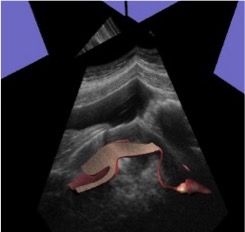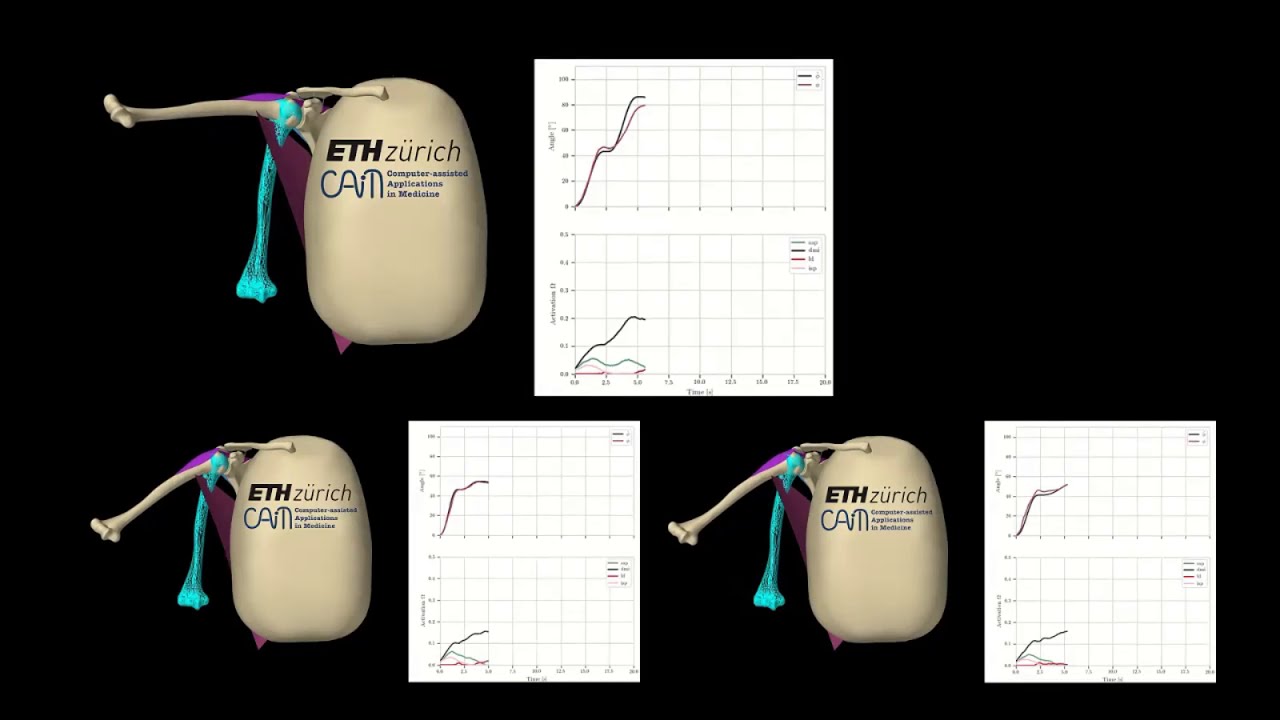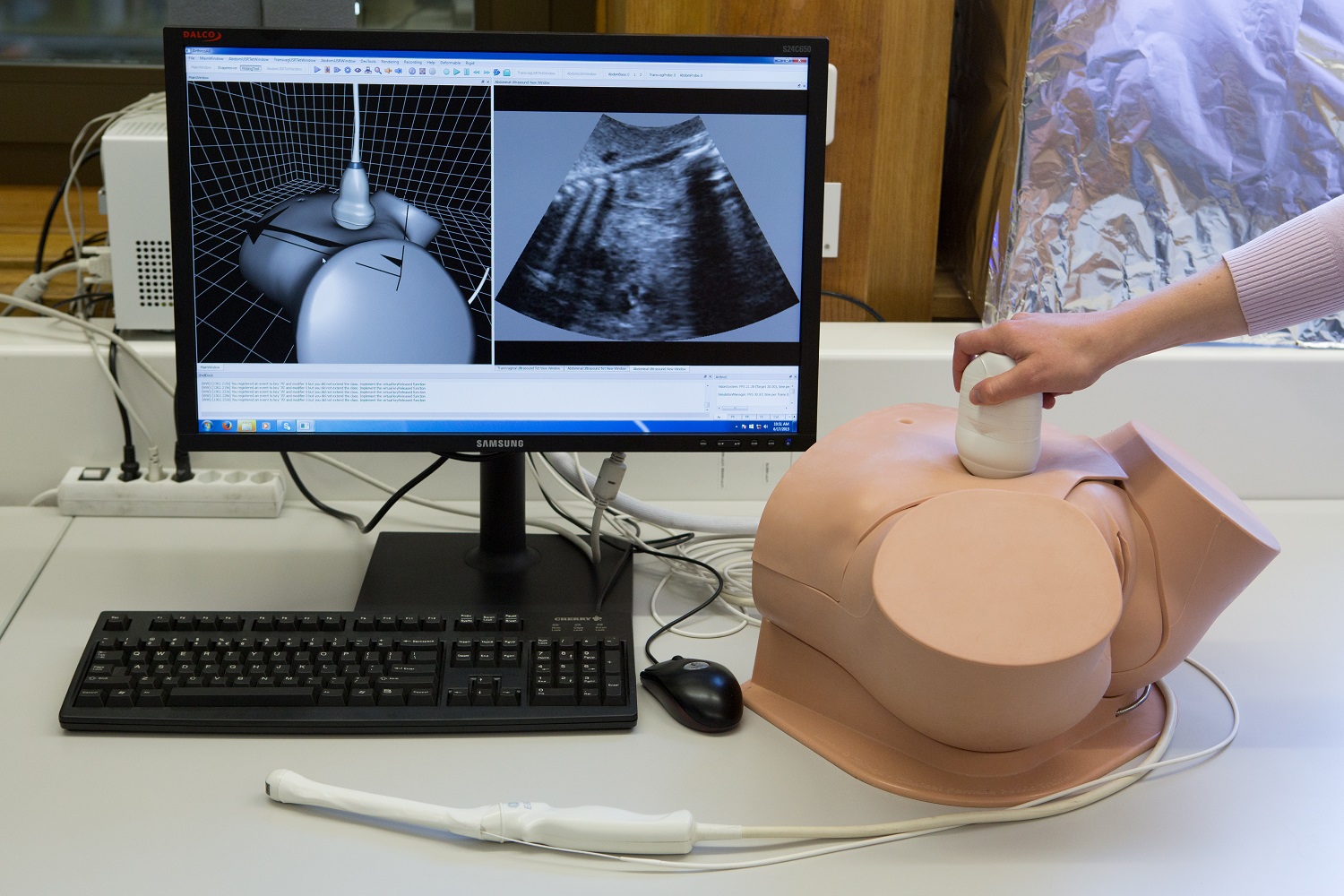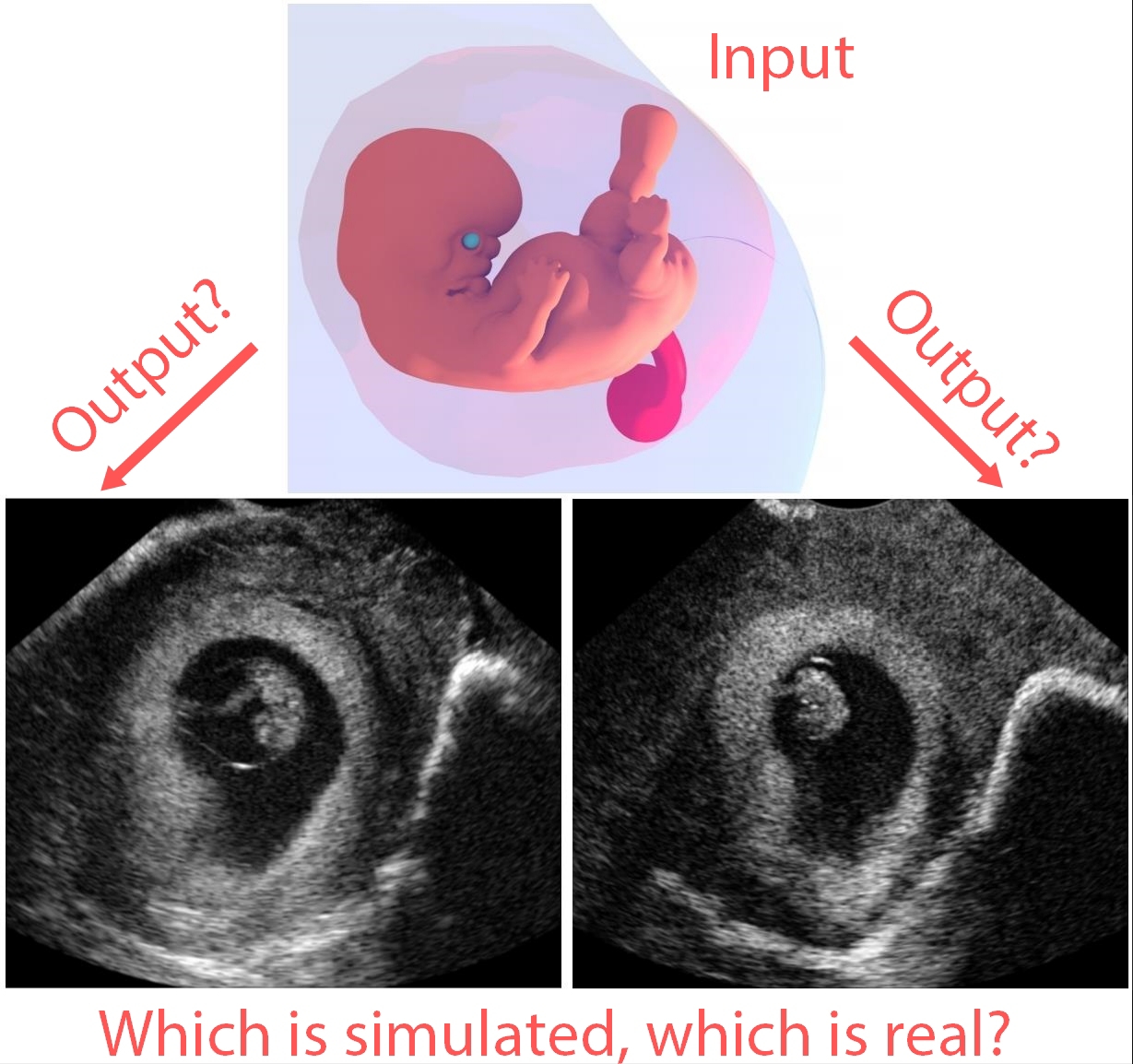Personalized Modeling & Simulation
Personalized Modeling and Simulation line of work is devoted to computer-assisted surgery and image-guided therapy, with research in medical image analysis, machine learning, personalized anatomical modeling, surgical planning, patient-specific simulations, and virtual-reality in clinical training.
Below some of our projects related to this field of activity:
Ultrasound Image Simulation for Training

Objective:
Ultrasound is a low-cost, non-ionizing, interactive imaging modality, used commonly in clinics as an invaluable tool for screening, diagnostics, and therapy guidance. However, its image formation physics and interactive nature makes it substantially user-dependent, for instance some pathology diagnosed by one sonographer may be missed by another one, due to poor transducer navigation or image interpretation. Therefore, ultrasound examinations require a high level of expertise, involving several technical and practical skills, which usually requires years to reach a sufficient level of competence.
In particular in OB/GYN, in-vivo training opportunities of navigation skills with volunteers for educational and residency training programs are also limited by the discomfort involved, e.g. in transvaginal examinations. Also, rare clinical case are not always available. Current ultrasound training systems lack image realism, prohibiting the training of image interpretation and limiting the training of navigation skills.
In this project, we aim at developing virtual-reality simulators for ultrasound training. In such a life-like simulation, trainees shall steer a (mock) transducer over a (mock) torso while watching the simulated image scenery on the (ultrasound) screen and being assessed via objective (computed) metrics. We focus on OB/GYN applications due to difficulties in finding volunteers, its large market potential, and the outstanding expertise of our team in this field. Nevertheless, the acquired know-how and developed techniques will translate to other anatomical targets and clinical scenarios in the future.
Participants: Lin Zhang, Dr. Tiziano Portenier, Prof. Dr. Orçun Göksel
Musculoskeletal Modeling and Simulation
Bone and joint disorders are a leading cause of physical disability worldwide and account for 50 % of all chronical diseases in people over 50 years of age. The goal of this project is to devise computerized modeling and simulation techniques that will further the understanding of musculoskeletal function as well as help for the preoperative planning of othopaedic surgeries.
A presentation of a recent work in this field is below:
(Details are in our paper at: external pagehttps://doi.org/10.1007/978-3-030-59716-0_14call_made )



